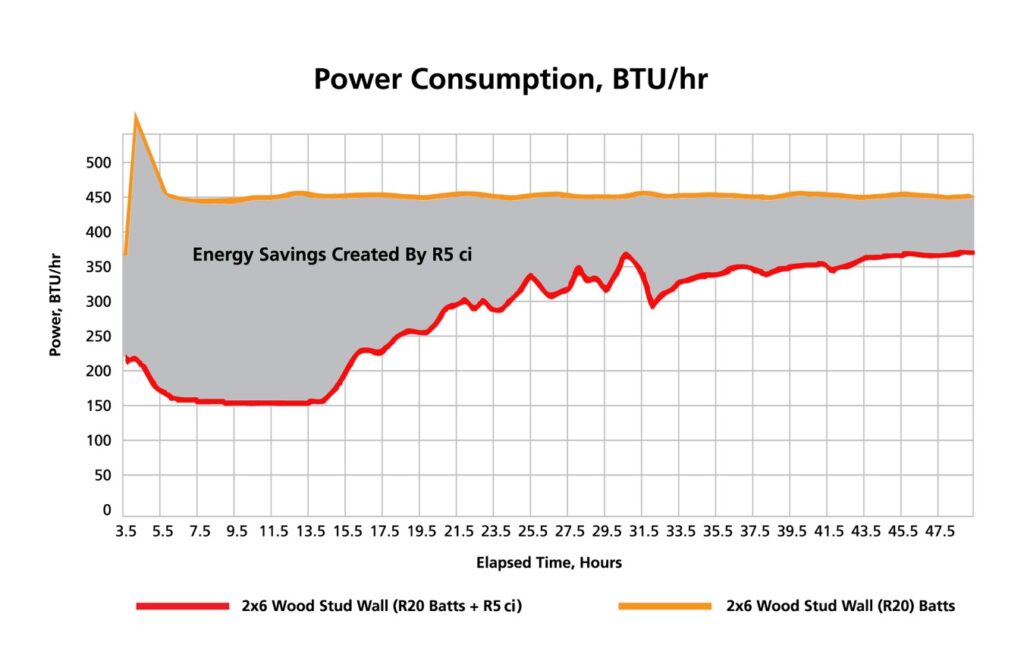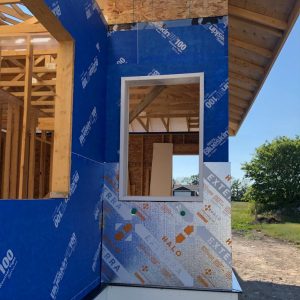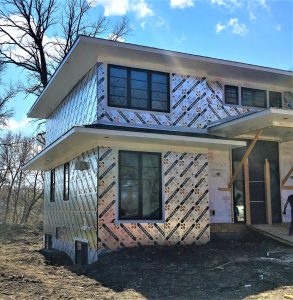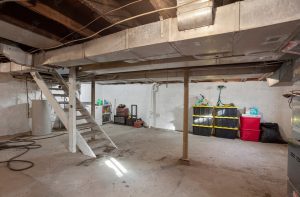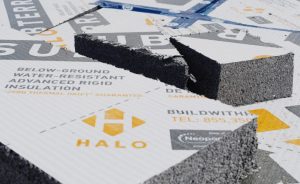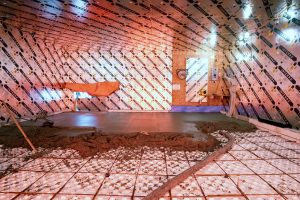Do you need to increase your above-grade walls’ R-Values? Whether you’re trying to meet the local code requirements or a client’s energy performance expectations, this post will show you an effective way of beefing up your walls’ thermal resistance with continuous insulation (CI).
2 Common Approaches For Increasing Above-Grade Walls’ R-Value
As of April 2021, framing a typical, above-grade 2×6 stud wall with R-20 batt insulation (effective overall wall assembly R-Value of R-17.1) costs around $15.87/square foot. Let’s use this cost as a benchmark when we evaluate the 2 most common options you have for boosting this wall’s thermal resistance.
1. Option 1 — upgrade batt insulation from R-20 to R-24
By simply upgrading the batt insulation to nominal R-24, you can raise the assembly’s effective R-Value to R-18.7. The expenses associated with the upgrade would drive the cost of the wall assembly to about $17.34/square foot.
With this approach, a cost increase of 9.2% gets you 9.4% more in effective thermal resistance.
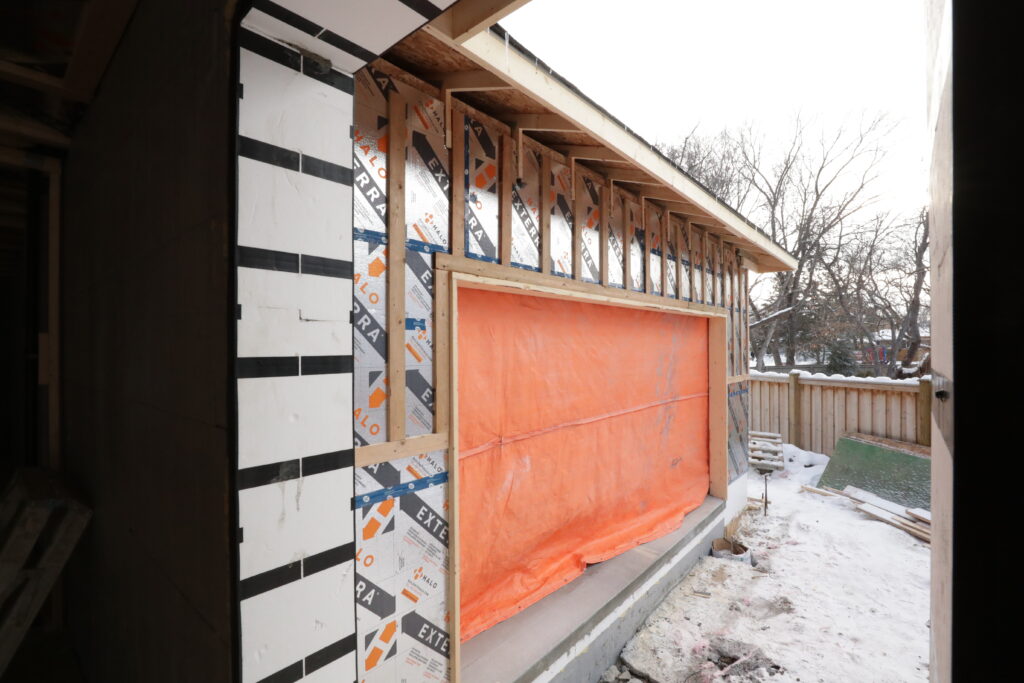
2. Option 2 — keep batt insulation at R-20, add a layer of continuous insulation (CI)
Adding a layer of continuous insulation, such as Halo® Exterra®’s 1.25-inch panel, drives the wall assembly’s effective R-Value to a stunning R-23.
With this added layer of Halo® Exterra®, your wall’s cost per square foot slightly rises to about $18.08 — a 13.8% cost increase that buys 34.5% more thermal resistance.
This approach also allowed you to save on house wrap, as taped Exterra panels eliminate the need for purchasing and applying house wrap.
The costing data used in this comparison was generously provided by Andy Ellis of Halfmoon Construction Company in Glenville, NY. Be sure to check out one of Andy’s award-winning projects here!
Here’s How a Layer of CI Works in a Wall Assembly
Regardless of how effective your insulation product is, a wall assembly will still bleed heat through thermal bridging — a process where heat flows unimpeded through the wall’s framing members. This is why batt’s effective thermal resistance is so much lower than its nominal R-Values — R-20 batt typically only gives you around R-17 or less in an actual wall assembly. This happens because while the batt is packed into stud bays, it leaves the studs themselves uninsulated and free to transfer heat outdoors.
In contrast, a rigid insulation product such as Halo’s Exterra can be applied in a continuous layer that eliminates all thermal bridging. By capping the exterior side of the assembly’s structural members with an additional, continuous layer of graphite polystyrene rigid insulation, Halo’s Exterra simply leaves no unobstructed path for heat to follow to escape the building.
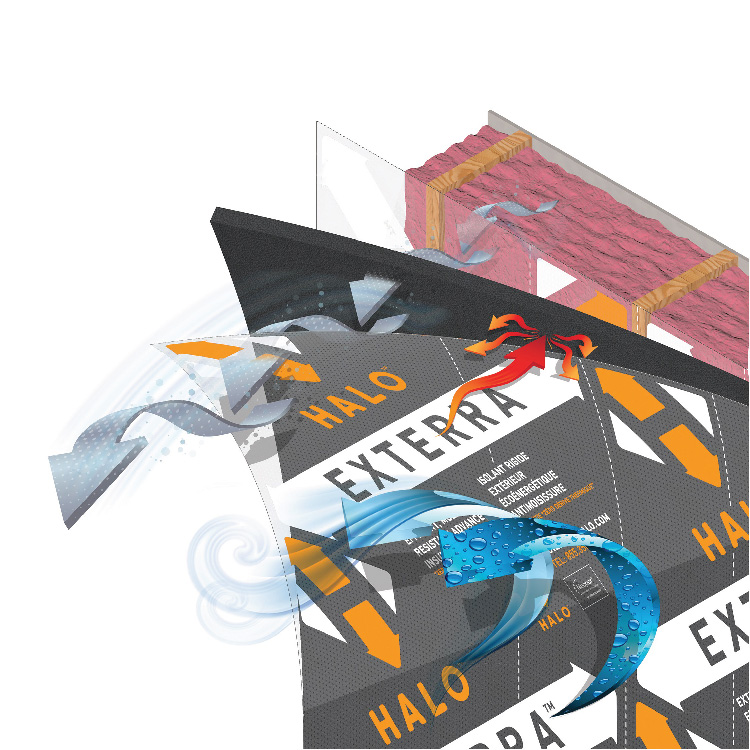
What’s more, CI products like Exterra can also increase a wall assembly’s thermal lag — the time delay affecting heat release from a building. This high thermal lag means that walls shielded by Exterra will preserve the indoor ambient temperatures longer as the exterior temperatures drop. This delay translates into longer “off” cycles for the heating system and substantial energy savings.

Don't miss a thing!
Subscribe for exclusive content, insider industry news and limited edition webcasts.
Wrapping It Up
You have 2 standard options for upgrading a wall assembly’s thermal resistance: you can increase the batt insulation nominal R-Value or add a layer of CI to the wall’s exterior.
The former method is definitely a little cheaper but gives you little in return. You can raise the batt’s nominal R-Value all you want, but you’re still leaving plenty of thermal bridges — studs, sill plates, joists, etc. — to transfer heat outdoors and reduce the effective R-Value.
On the other hand, by simply adding a layer of CI, such as Halo’s Exterra, your costs increase slightly more but you get a whopping 34.5% R-Value boost. This method also creates a higher thermal lag, leading to reduced long-term energy costs.
Strategic Placement of House Wrap with Halo’s Exterra for Enhanced Building Protection
In 2024, optimizing your home’s insulation and moisture barrier strategies remains crucial, particularly when considering Halo’s Exterra as a pivotal component of your construction approach.
Comparing Halo Exterra by Logix Brands and Comfortboard 80 by Rockwool
Insulation plays a pivotal role in residential construction, affecting a building’s energy efficiency, safety, comfort, and environmental impact. The debate between Halo Exterra by Logix
Revolutionizing Basement Renovations: A Comprehensive Guide to Insulating and Flooring Your Existing Concrete Slab with Halo Interra
Transforming your basement is not just a home improvement project; it’s an investment in your property’s value and functionality. This guide focuses on basement finishing,

